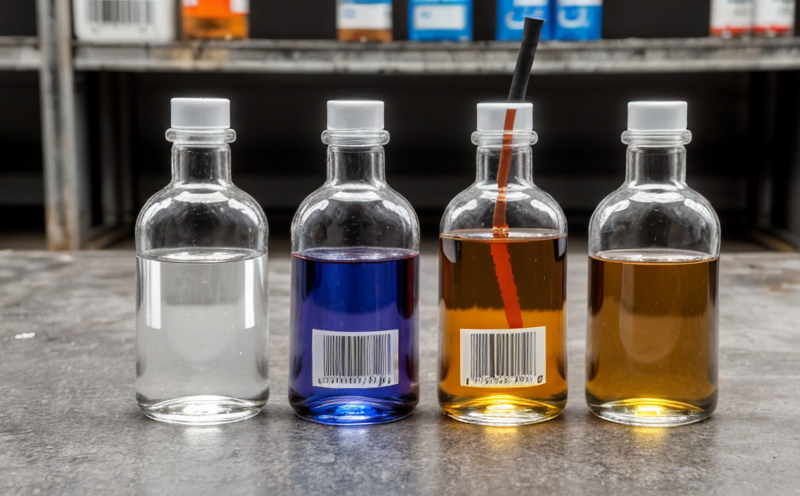ISO 6270 Corrosion and Degradation Testing in Humid Atmospheres
The ISO 6270 standard provides a comprehensive framework for assessing the corrosion and degradation of materials, components, and products under humid conditions. This testing is essential for industries where environmental factors significantly influence product performance and longevity.
Corrosion and degradation in humid atmospheres can lead to substantial economic losses through increased maintenance costs, shortened product lifespans, and potential safety hazards. By adhering to the ISO 6270 standard, manufacturers ensure that their products are robust against such environmental stresses, thus enhancing reliability and customer satisfaction.
The testing process involves exposing materials or components to controlled humid atmospheres for extended periods under specific conditions. This allows for the accurate prediction of real-world performance by simulating a range of environmental factors. The ISO 6270 standard ensures that these tests are conducted consistently, providing reliable data across various industries.
Key aspects of ISO 6270 include the selection of appropriate test specimens and exposure conditions that closely mimic actual usage environments. Specimens are subjected to varying levels of humidity and temperature, with controlled cycles designed to accelerate potential corrosion or degradation processes. The testing process is meticulously documented, providing detailed reports on the performance of each specimen.
The standard also emphasizes the importance of selecting appropriate reference materials for comparison purposes. This ensures that any observed changes in test specimens can be accurately attributed to environmental factors rather than variations in material composition.
For industries such as automotive, aerospace, and electronics, ISO 6270 testing is crucial for ensuring product durability and safety. By adhering to this standard, manufacturers can confidently predict the lifespan of their products under real-world conditions, thereby reducing risks associated with premature failure or unexpected performance issues.
The comprehensive nature of the ISO 6270 standard makes it an invaluable tool for quality managers, compliance officers, R&D engineers, and procurement teams. It provides a robust framework for assessing corrosion and degradation in humid atmospheres, ensuring that products meet stringent international standards.
By leveraging this testing method, organizations can enhance their reputation for producing high-quality, reliable products while minimizing costs associated with product failures and recalls. The ISO 6270 standard thus plays a pivotal role in driving innovation and excellence within the materials science sector.
Industry Applications
- Aerospace: Ensuring the durability of aircraft components under humid conditions.
- Metalworking: Evaluating the corrosion resistance of metallic alloys used in various applications.
- Automotive: Assessing the performance and longevity of automotive parts exposed to humidity.
- Electronics: Testing the reliability of electronic devices in environments with high humidity levels.
- Building Materials: Investigating the durability of construction materials when exposed to humid atmospheres.
- Petrochemicals: Monitoring the integrity of storage tanks and pipelines under varying humidity conditions.
- Pharmaceuticals: Ensuring that drug delivery systems and packaging maintain their effectiveness in humid environments.
The versatility of ISO 6270 allows it to be applied across multiple industries, making it a valuable resource for ensuring product reliability and performance under real-world conditions.
International Acceptance and Recognition
The ISO 6270 standard is widely recognized and accepted in numerous countries around the world. Its comprehensive approach to corrosion and degradation testing ensures that products undergo rigorous evaluation, leading to higher standards of quality and reliability.
Many global organizations and regulatory bodies mandate compliance with ISO 6270 for various industries. This includes major aerospace manufacturers, automotive companies, electronics firms, and pharmaceutical enterprises. By adhering to this standard, these organizations demonstrate their commitment to producing high-quality products that meet international standards of excellence.
The widespread acceptance of ISO 6270 is due in part to its stringent testing protocols, which provide accurate data on the performance of materials under humid conditions. This consistency across different regions and industries enhances trust and confidence among customers and stakeholders.
Compliance with ISO 6270 can also facilitate easier market access for manufacturers seeking to penetrate international markets. By meeting this standard, companies can ensure their products meet regulatory requirements in various countries, thereby reducing barriers to entry and expanding their global footprint.
The international acceptance of ISO 6270 underscores its importance as a benchmark for quality assurance. Its recognition by leading industries and regulatory bodies reinforces its credibility and value within the materials science sector.
Environmental and Sustainability Contributions
ISO 6270 plays a significant role in promoting sustainability by ensuring that products are designed to withstand environmental challenges, thereby reducing waste and extending product lifespans. By adhering to this standard, manufacturers can contribute to more sustainable practices across various industries.
The testing method described in ISO 6270 helps identify potential areas of improvement in material selection and design early in the development process. This proactive approach allows for the reduction of environmentally harmful substances while promoting the use of eco-friendly alternatives where possible.
Compliance with ISO 6270 also supports lifecycle assessment (LCA) efforts by providing reliable data on product performance under real-world conditions. LCAs are crucial tools in assessing the environmental impact of products throughout their lifecycles, from raw material extraction to disposal or recycling.
The standard's emphasis on durability and reliability contributes to resource efficiency by minimizing the need for frequent replacements due to premature failure. This not only reduces waste but also conserves natural resources used in manufacturing processes.
By embracing ISO 6270, manufacturers can demonstrate their commitment to sustainable practices, which is increasingly important as consumers become more environmentally conscious. Meeting this standard enhances a company's reputation for corporate social responsibility (CSR) and contributes positively to the overall environmental footprint of the industry.





